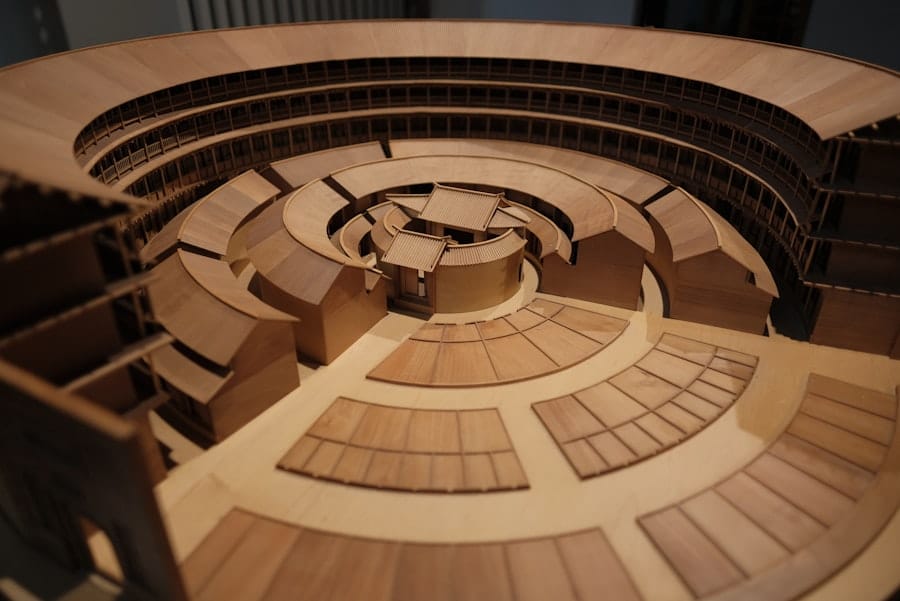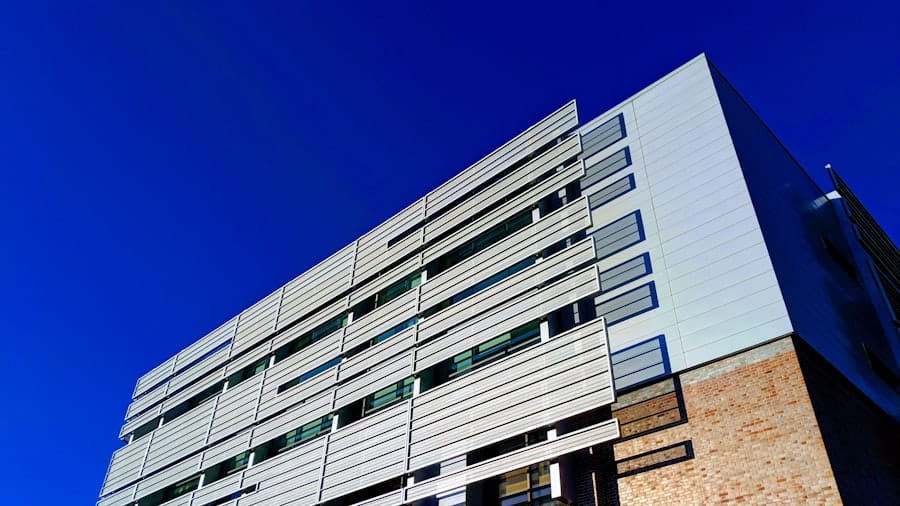The landscape of astronaut training is undergoing a transformative shift, driven by the integration of advanced technologies such as artificial intelligence (AI) and augmented reality (AR). These innovations are not merely enhancements; they represent a paradigm shift in how astronauts prepare for the complexities of space missions.
This evolution is crucial as space exploration becomes increasingly ambitious, with missions targeting Mars and beyond. AI and AR are reshaping the training environment by creating realistic simulations that mimic the conditions of space.
This combination not only enhances the learning experience but also prepares astronauts for the unpredictable nature of space missions. As we delve deeper into the specific roles of AI and AR in astronaut training, it becomes evident that these technologies are not just tools; they are essential components of a new training paradigm designed to meet the challenges of modern space exploration.
Key Takeaways
- AI and augmented reality are revolutionizing astronaut training by simulating space environments and enhancing training exercises.
- AI plays a crucial role in analyzing astronaut performance and providing valuable feedback for improvement.
- Augmented reality enhances astronaut training exercises by overlaying digital information onto the real world, creating a more immersive and interactive experience.
- The integration of AI and augmented reality in spacewalk training provides a realistic and safe environment for astronauts to practice crucial skills.
- While AI and augmented reality offer numerous advantages in astronaut training, there are limitations such as cost, technical challenges, and potential overreliance on technology.
The Role of AI in Simulating Space Environments and Scenarios
Artificial intelligence plays a pivotal role in creating realistic simulations of space environments and scenarios that astronauts may encounter during their missions. By leveraging machine learning algorithms, AI can analyze vast amounts of data from previous missions, environmental conditions, and astronaut behavior to generate highly accurate simulations. For example, NASA has developed AI-driven systems that can replicate the microgravity environment of the International Space Station (ISS), allowing astronauts to practice maneuvers and operations in conditions that closely resemble those they will face in space.
Moreover, AI can create adaptive training scenarios that respond to an astronaut’s actions in real-time. This means that if a trainee makes a mistake or encounters an unexpected situation, the AI can modify the simulation to present new challenges or provide additional guidance. Such adaptability is crucial for preparing astronauts for the unpredictable nature of space missions, where they must be ready to respond to emergencies or equipment malfunctions.
The ability to simulate various scenarios—from routine operations to critical failures—ensures that astronauts are well-equipped to handle any situation they may face during their time in space.
How Augmented Reality Enhances Astronaut Training Exercises

Augmented reality significantly enhances astronaut training exercises by providing immersive experiences that blend digital information with the physical environment. Through AR headsets or smart glasses, astronauts can visualize complex systems, procedures, and data overlays while engaging in hands-on training. For instance, during a training exercise on spacecraft systems, an astronaut wearing AR goggles can see real-time data about system performance, maintenance instructions, or even step-by-step guides for troubleshooting issues.
This immediate access to information allows for a more intuitive understanding of complex systems. Additionally, AR can facilitate collaborative training exercises where multiple astronauts can interact with the same virtual elements in their physical environment. This capability is particularly beneficial for team-based tasks, such as conducting repairs on a spacecraft or performing scientific experiments.
By visualizing shared data and objectives through AR, astronauts can improve their communication and coordination skills, which are essential for successful mission execution. The immersive nature of AR not only enhances learning but also fosters a sense of presence and engagement that traditional training methods often lack.
Using AI to Analyze Astronaut Performance and Provide Feedback
The integration of AI into astronaut training extends beyond simulation and visualization; it also encompasses performance analysis and feedback mechanisms. AI systems can track an astronaut’s actions during training exercises, collecting data on their decision-making processes, reaction times, and adherence to protocols. This data is then analyzed using advanced algorithms to identify patterns and areas for improvement.
For example, if an astronaut consistently struggles with a particular procedure, the AI can flag this issue and recommend targeted training sessions to address it. Furthermore, AI-driven feedback systems can provide real-time insights during training exercises. As astronauts perform tasks, they can receive immediate feedback on their performance, allowing them to make adjustments on the fly.
This instant feedback loop is invaluable for reinforcing correct behaviors and correcting mistakes before they become ingrained habits. By utilizing AI for performance analysis, training programs can become more personalized and effective, ensuring that each astronaut receives the support they need to excel in their roles.
The Integration of AI and Augmented Reality in Spacewalk Training
Spacewalks, or extravehicular activities (EVAs), present some of the most challenging scenarios for astronauts. The integration of AI and augmented reality into spacewalk training is revolutionizing how astronauts prepare for these critical tasks. Through AR simulations, astronauts can practice EVAs in a controlled environment that mimics the conditions of space while providing visual cues and guidance.
For instance, AR can overlay schematics of tools or equipment directly onto the astronaut’s field of view, helping them navigate complex tasks without needing to refer back to manuals or checklists. AI enhances this training by analyzing the astronaut’s movements and decision-making during simulated EVAs. By tracking their actions and comparing them against established best practices, AI can provide insights into efficiency and safety.
For example, if an astronaut takes longer than expected to complete a task or uses tools inefficiently, the AI can highlight these issues and suggest improvements. This combination of AR visualization and AI analysis creates a comprehensive training experience that prepares astronauts for the unique challenges of working outside their spacecraft.
Advantages and Limitations of AI and Augmented Reality in Astronaut Training

The advantages of incorporating AI and augmented reality into astronaut training are manifold. One significant benefit is the ability to create highly realistic simulations that prepare astronauts for a wide range of scenarios without the risks associated with actual space missions. This level of preparedness is crucial as space exploration becomes more complex and ambitious.
Additionally, the adaptability of AI-driven simulations allows for personalized training experiences tailored to each astronaut’s strengths and weaknesses. However, there are limitations to consider as well. The reliance on technology introduces potential challenges related to system failures or inaccuracies in simulations.
If an AI system misinterprets data or an AR overlay malfunctions, it could lead to confusion or misinformation during training exercises. Furthermore, there is a learning curve associated with using these technologies; astronauts must become proficient in operating AR devices and interpreting AI-generated feedback. Balancing traditional training methods with these advanced technologies is essential to ensure comprehensive preparation for space missions.
Future Developments and Applications of AI and Augmented Reality in Space Exploration
Looking ahead, the future developments in AI and augmented reality promise even more innovative applications within astronaut training and space exploration at large. As machine learning algorithms continue to evolve, we can expect increasingly sophisticated simulations that incorporate real-time data from ongoing missions or even predictive analytics based on historical performance trends. This could lead to more proactive training approaches where astronauts are prepared for specific challenges based on their mission profiles.
Moreover, as AR technology advances, we may see more seamless integration into everyday tasks aboard spacecraft or during planetary exploration missions. Imagine astronauts using AR glasses not only for training but also for real-time navigation or equipment operation while on Mars or the Moon. The potential for remote collaboration with ground control teams through AR interfaces could further enhance mission success rates by providing instant access to expert guidance during critical operations.
The Impact of AI and Augmented Reality on the Future of Astronaut Training
The integration of artificial intelligence and augmented reality into astronaut training represents a significant leap forward in preparing humans for the challenges of space exploration. These technologies not only enhance the realism and effectiveness of training exercises but also foster a culture of continuous improvement through data-driven insights and adaptive learning environments. As we continue to push the boundaries of what is possible in space travel, embracing these innovations will be crucial for ensuring that astronauts are equipped with the skills and knowledge necessary to thrive in the unforgiving environment beyond our planet.
In summary, as we look toward future missions that may take us further into our solar system than ever before, the role of AI and augmented reality will only grow more critical. By harnessing these technologies effectively, we can ensure that our astronauts are not just trained but truly prepared for the extraordinary challenges that await them among the stars.
A related article to “How AI and Augmented Reality Are Assisting Astronaut Training” can be found in The Next Web, which brings insights to the world of technology. This article explores the latest advancements in AI and AR technology and how they are revolutionizing various industries, including space exploration. To learn more about the cutting-edge technologies shaping the future of astronaut training, check out the article

